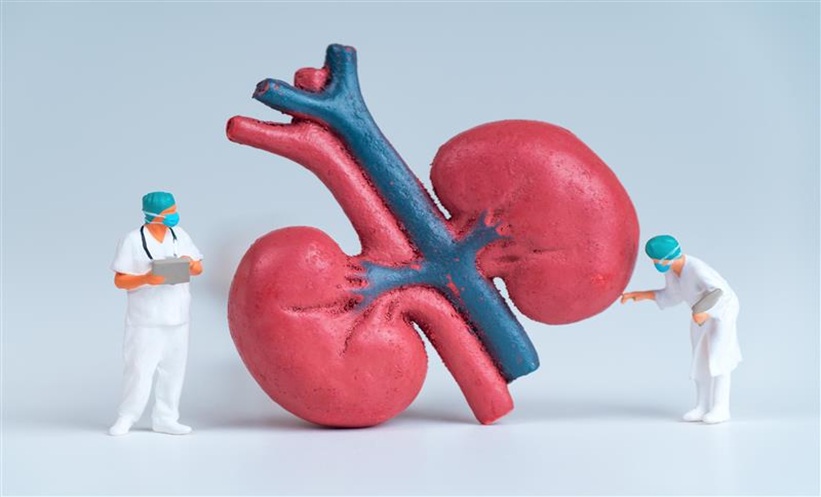Proteases are involved in various physiological processes, such as enzyme activation, signalling pathways, post-translational modifications, and protein degradation and digestion. In the blood plasma, proteases mostly circulate as inactive zymogens. Nephrotic syndrome is characterised by increased glomerular permeability for plasma proteins, which is expected to lead to urinary excretion of proteases. At the same time, in the distal tubule of nephrons, some proteases may overactivate the epithelial sodium channel by proteolytic release of an inhibitory peptide in the γ-subunit. This leads to increased sodium retention and, ultimately, to the typical symptoms associated with sodium retention and oedema formation.1 There is a lack of data on the quantity, activity, and class specificity of aberrantly filtered proteases in nephrotic syndrome.
A biochemical assay was established to quantify protease activity in urinary samples based on a substrate library containing 195 different pentapeptides covering all combinations of protease cleavage sites (P-CHECK®, Panatecs, Germany).2 Each peptide was enframed by a fluorescence resonance energy transfer (FRET) pair with 7-methoxycoumarin-4-acetic acid (Mca) as the fluorophore and 2,4-dinitrophenyl (Dnp) as the quencher. Mca was released upon proteolysis and emitted fluorescence at 405 nm. To measure urinary protease activity, samples from healthy and nephrotic syndrome humans and mice were incubated with the substrate library at 37°C for a 48-hour period. The proportions of the respective protease classes were determined after the addition of optimised high amounts of specific inhibitors against serine (AEBSF), cysteine (E-64), aspartate (pepstatin A), and metalloproteases (EDTA). Protease activity was expressed in relative units (1 RU=1,000 relative fluorescence units/mg creatinine).
We analysed urine samples from 18 patients with acute nephrotic syndrome of varying aetiology (average proteinuria: 5,805±3,713 mg/g creatinine) and compared the results with those obtained from the urine samples of 10 healthy individuals without proteinuria. The nephrotic patients were found to have a total protease activity of 524±422 RU, which was increased by a factor of 2.36 compared to that of a healthy person (222±141 RU; p=0.016). A high proportion of the urinary protease activity of nephrotic syndrome and healthy persons was sensitive to inhibition by AEBSF (82±15% and 75±31%, respectively). The remaining protease activity was distributed among the other protease classes; metalloproteases also had a high proportion (33±20% and 40±29%, respectively), while cysteine and aspartate proteases were less abundant (<25%). The data also suggested an overlap of effects between the inhibitors. Mice with doxorubicin-induced experimental nephrotic syndrome exhibited increased urinary protease activity from 3,287±1,315 RU at baseline to 52,135±28,166 RU (p=0.0002), corresponding to an increase by a factor of 16.50±5.31. Similarly, in humans, serine proteases accounted for the highest proportion of urinary total protease activity, followed by metalloproteases.
In conclusion, nephrotic syndrome leads to increased urinary excretion of active plasma proteases, which can be termed proteasuria. Serine proteases account for the vast majority of urinary protease activity in healthy people and nephrotic syndrome patients. The identification of the specific proteases involved in the increased protease activity can be accomplished by a proteomic approach, and the physiological role of the potential candidates can be further validated using knockout mice.







